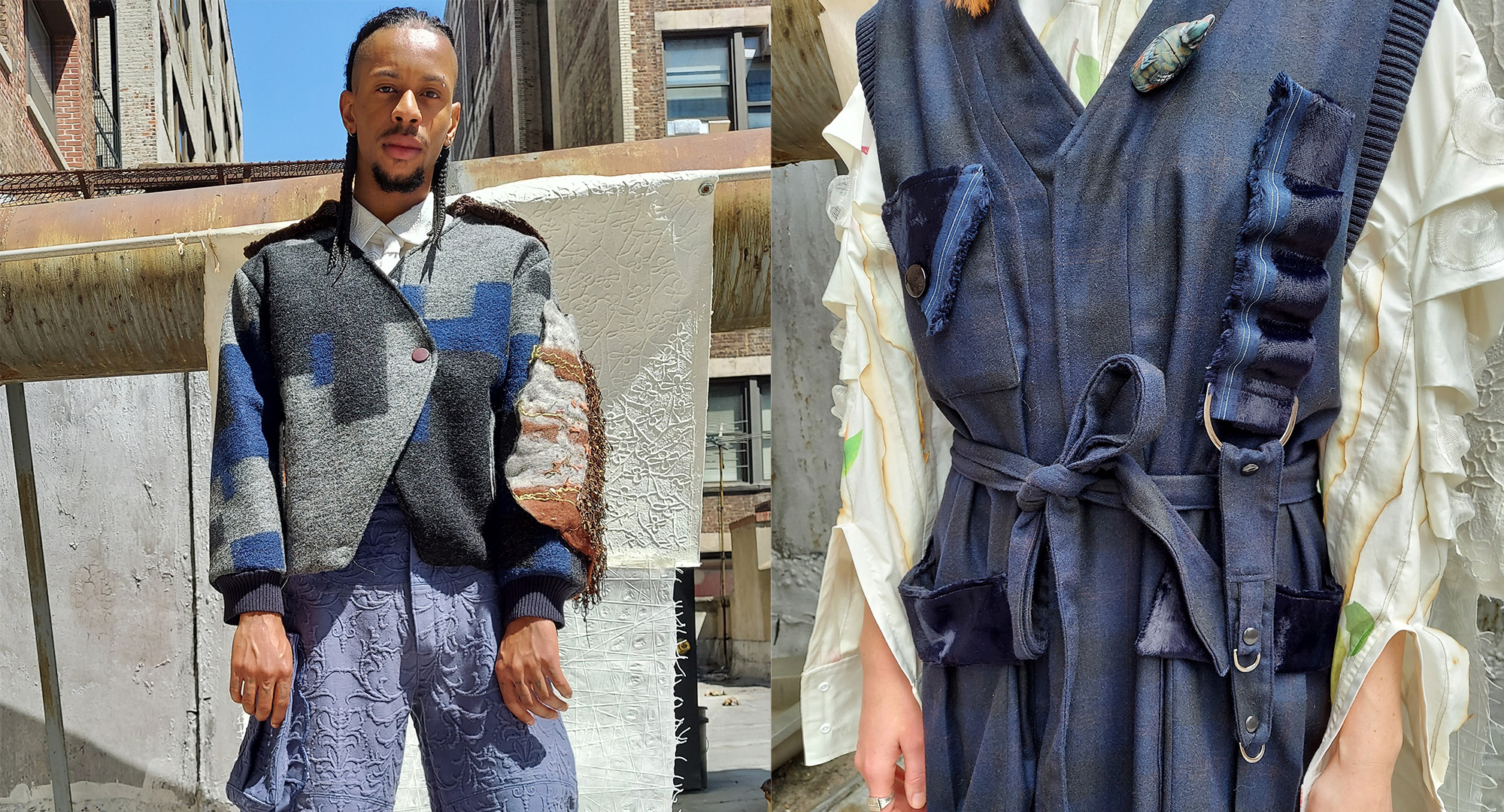They say nature is the greatest teacher, which is certainly true for for FIT graduate Jacob Caraccilo. Nature dominates both the production and design processes of his sustainable brand, Pére Trash.
Jacob Caraccilo is a recent Fashion Institute of Technology (FIT) Sportswear graduate and sustainable fashion prodigy. Born in West Point, NY, he lived everywhere, from Italy to Chattanooga, TN, before moving to NYC. His clothing brand, Pére Trash, masterfully unites his passions for fashion and conservation.
“Sustainability is a huge part of Pére Trash,” said Caraccilo. Keeping in mind that sustainability involves economic, social, and environmental factors, he believes that fabric sourcing can have the biggest impact.
When he made his first pair of pants out of curtains from his family’s home in Italy, Caraccilo’s infatuation with fashion and sustainable fabric sourcing simultaneously began. He likes to give fabrics a “second life” by repurposing anything from quilts to seat belts. Most of his sourcing comes from antique malls, flea markets, and secondhand stores.
“All in all, I try to stay clear from mass production, sourcing fabric directly from mills, and keep the garment quantity low.”
More recently, Caraccilo has been focused on finding sustainable plant-based fabrics. He utilized eucalyptus, lotus, and organic cotton in his FIT thesis collection. These fabrics are sourced from a farm in Cambodia that practices sustainability at its highest level. “All in all, I try to stay clear from mass production, sourcing fabric directly from Mills, and keep the garment quantity low,” said Caraccilo.
Caraccilo’s designs draw influence directly from nature, especially quantitative research on nature. His sister, Jenna, sent him photos and told him stories of her studies when she went to Africa to study wildlife conservation for her master’s degree. “This gave me great insight into conservation and generated many other ideas for my thesis collection, Wildlife and Terrain Conservation,” said Caraccilo.
At the 2023 Macy’s FIT Future of Fashion Runway Show in May of this year, Caraccilo’s Wildlife and Terrain Conservation collection won a Critic Award. Research, articles, guideline handbooks, and uniform catalogs from the National Parks Service and safaris influenced his silhouettes. Forest and jungle terrains inspired the clothing’s construction, layering, color, and prints. “Nature became more of a guide to ingenuity and an encouragement to find a deeper essence to my designs,” said Caraccilo.
“Nature became more of a guide to ingenuity and an encouragement to find a deeper essence to my designs.”
Caraccilo describes his designs as “disheveled and retro-aggressive.” The brand name, “Pére Trash,” fits this aesthetic perfectly. “Pére” comes from the French origin of a religious surname meaning father. It represents the traditional, strict, and respectful edge to Caraccilo’s work. “Trash has more of an open loose end meaning and gives me eligibility to use unconventional materials or unusual fabrics to make a garment out of,” said Caraccilo. The name allows him the freedom to tailor, then turn around and do the complete opposite–like distressing–on the next garment.
Sustainable brands are, thankfully, becoming more and more commonplace. However, with its receptive approach, Pére Trash sets itself apart from other small, sustainable brands. “I feel that most sustainable small brands choose one sustainable practice and repeat that over and over again,” said Caraccilo. For example, a brand may use sustainable materials but enlist unethical labor practices. “Pére Trash is very open-minded about sustainable practices; we like to try and diversify and use many sustainable practices,” said Caraccilo.
In an age of increased environmental awareness, sustainable fashion’s future is still in the air. Young designers like Caraccilo provide hope for the industry. He believes that Conservational Acts, utilizing existing or higher quality materials, low-quantity production, and tech fabrics are the future of sustainable fashion. Pére Trash is proof that fashion can be both chic and green.
All images courtesy of Jacob Caraccilo.





